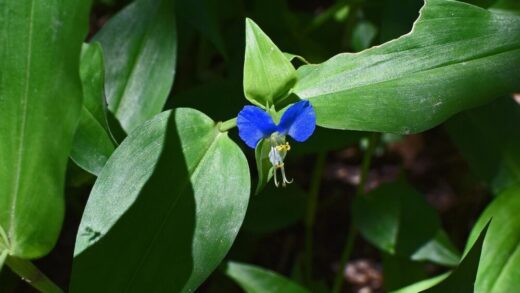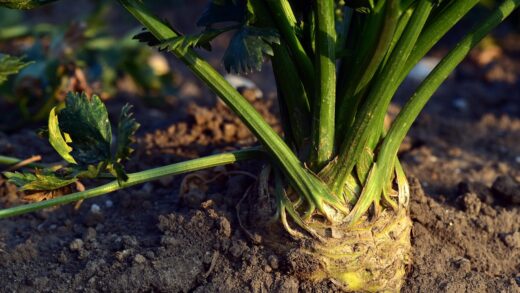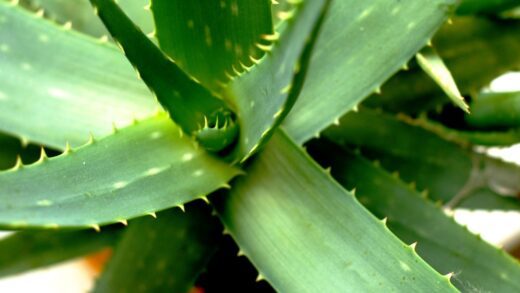The beautiful bleeding heart, like many other herbaceous perennials, has evolved to survive cold winter conditions through a process of dormancy. This is a natural period of rest where the plant’s metabolic activity slows down dramatically, and all of its energy is conserved in its underground storage structures, which in this case are the fleshy rhizomes. Understanding this life cycle is fundamental to providing the correct winter care. The visible sign of approaching dormancy is the yellowing and dying back of the foliage, which typically occurs in mid to late summer after the plant has finished flowering. This is not a sign of distress but a normal and necessary preparation for the cold months ahead.
The process of senescence, or the die-back of the leaves and stems, is an active one. During this time, the plant is diligently reallocating valuable nutrients and carbohydrates from the foliage down into the rhizomes. These stored energy reserves are absolutely critical for the plant’s survival through the winter and for fueling the initial burst of growth the following spring. For this reason, it is crucial that gardeners resist the temptation to cut back the foliage as soon as it starts to look untidy. The plant should be allowed to complete this energy transfer process naturally.
Dormancy is triggered by environmental cues, primarily decreasing day length and falling temperatures. These signals tell the plant to halt its top growth and prepare for the unfavorable conditions of winter. Once fully dormant, the plant is essentially asleep, with no visible growth above the soil line. Its survival is entirely dependent on the health and viability of its underground rhizomes, which must endure freezing temperatures, potential moisture fluctuations, and the threat of rot or predation while they wait for the return of spring.
Proper winter care, therefore, is not about trying to keep the plant growing but about protecting these vital underground parts. The goal is to create a stable and insulated environment for the dormant rhizomes, shielding them from the most extreme and damaging aspects of winter weather. By understanding and respecting the plant’s natural dormant period, you can ensure it has the best possible chance of not just surviving but thriving and returning with renewed vigor the following year.
Preparing the plant for winter
The preparation for wintering the beautiful bleeding heart begins in the late summer and autumn, as the plant completes its active growing season. The first and most important step is to allow the foliage to die back naturally. As the leaves turn from green to yellow and then to brown, they are working hard to send energy down to the roots. Wait until the foliage is completely brown and has collapsed before you consider cutting it back. This ensures that the maximum amount of energy has been stored for winter survival.
More articles on this topic
Once the foliage has completely died back, it is time for a seasonal cleanup. Using a clean, sharp pair of pruners or shears, cut the dead stems and leaves back to about one to two inches from the ground. Removing this dead plant material is an important sanitation practice. It helps to prevent fungal spores and pest eggs from overwintering in the debris and causing problems in the following spring. It also gives the garden bed a tidier appearance over the winter months.
After cleaning up the dead foliage, it is a good time to ensure the area around the plant’s crown is free of weeds. Weeds can harbor pests and diseases, and removing them in the autumn reduces the competition the plant will face when it emerges in the spring. This final tidying of the garden bed sets the stage for the most crucial step of winter protection: the application of mulch. However, this step should wait until after the ground has had a chance to cool down significantly.
It is also important to ensure the plant goes into the winter with adequate, but not excessive, moisture in the soil. If your autumn has been particularly dry, provide a final deep watering a few weeks before your first expected hard frost. This helps to hydrate the roots and the surrounding soil before the ground freezes. However, avoid keeping the soil saturated, as overly wet conditions combined with cold temperatures can increase the risk of the rhizomes rotting during the winter.
The importance of winter mulch
Applying a layer of winter mulch is arguably the most critical action you can take to protect your beautiful bleeding heart during the cold months. The primary purpose of winter mulch is not to keep the ground warm, but rather to keep it consistently frozen. The greatest danger to many dormant perennials is not the cold itself, but the repeated freezing and thawing of the soil that can occur during winter warm spells followed by deep freezes. This freeze-thaw cycle can heave the plant’s crown and roots right out of the ground, exposing them to desiccating winds and lethal cold.
More articles on this topic
The ideal time to apply winter mulch is after the ground has frozen for the first time, typically following one or two hard frosts. Applying the mulch too early, while the soil is still warm, can trap heat and moisture, which may delay the plant’s dormancy and create an inviting environment for fungal diseases and pests like voles or mice who are looking for a winter home. Patience is key; wait for the cold weather to truly set in before you provide this protective blanket.
A variety of organic materials can be used as winter mulch. Shredded leaves are an excellent and readily available option, as they are light and trap air well, providing good insulation. Other suitable choices include pine needles (pine straw), chopped straw, or marsh hay. Avoid using heavy materials like whole leaves, which can mat down and become waterlogged, or materials that might contain weed seeds. The goal is to apply a light, airy layer of insulation over the plant’s crown.
The mulch should be applied in a layer that is approximately three to four inches deep, covering the area where the plant’s roots are located. This insulating layer will help to moderate soil temperature fluctuations, keeping the ground frozen solid until spring arrives for good. This simple step provides a stable environment for the dormant rhizomes, protecting them from the most damaging aspects of winter weather and ensuring they are in prime condition to produce a spectacular display of new growth when spring returns.
Spring care after winter
As winter begins to recede and the signs of spring appear, it is time to think about removing the winter protection from your beautiful bleeding heart. The timing of mulch removal is important; it should be done after the threat of hard, prolonged freezes has passed but before new growth begins to push up through the soil. Leaving the mulch on for too long can slow the warming of the soil and may inhibit or damage the emerging shoots. A good indicator is when you see other early spring bulbs and perennials beginning to stir.
The removal of the winter mulch should be done gently and carefully. Use a rake or your hands to gradually pull the shredded leaves or straw away from the crown of the plant. Be particularly cautious as you get closer to the center, as the delicate new shoots (often a reddish-purple color) may be just below the surface and are very fragile and easily broken. Damaging these primary shoots can set the plant back and reduce its flowering potential for the season.
It can be beneficial to leave a thinner, one-inch layer of the finer mulch material in place around the plant. This will continue to offer some benefits as a summer mulch, helping to conserve soil moisture and suppress weeds. The remaining organic material will also gradually break down, adding valuable nutrients and structure to the soil. The thicker, heavier winter layer, however, must be pulled back to allow sunlight and warmth to reach the soil and stimulate growth.
Once the mulch has been pulled back and the new growth is visible, you can apply a balanced, slow-release fertilizer or a top dressing of compost around the plant to provide the nutrients it will need for its vigorous spring growth. This is also the time to resume a regular watering schedule, ensuring the soil remains consistently moist as the plant leaves its dormant state and enters its active growth phase. This thoughtful transition from winter protection to spring care will get your beautiful bleeding heart off to a healthy and robust start.


















